Is it wise to extend the New Strategic Arms Reduction Treaty (New START) between the United States and Russia? In recent months, senior Trump administration officials and conservative defense analysts have expressed increasing doubts. Last June, then-U.S. National Security Advisor John Bolton said it was “unlikely” that the Trump administration would seek to extend the treaty; in April, former defense and arms control officials Eric Edelman and Robert Joseph argued in the National Review that New START has failed to address important developments such as Russia’s deployment of long-range underwater drones and hypersonic weapons, its expansion of its non-strategic nuclear capabilities, and the increase of Chinese strategic capabilities.
Many of these concerns are valid, especially concerns about the changed international security environment since the treaty was signed in 2010. However, extending New START by five years would enhance the U.S. ability to address those concerns by ensuring it maintains a modern and effective strategic deterrent, and the cohesion of its alliances.
Maintaining a modern and effective U.S. strategic nuclear deterrent
The strongest argument in favor of New START extension is that it would help the United States maintain a modern and effective strategic nuclear deterrent. This point has been made most cogently by General John Hyten, the current vice chairman of the Joint Chiefs of Staff and former commander of U.S. Strategic Command, who noted in congressional testimony that:
I’m a big supporter [of the treaty] … When it comes to nuclear weapons and nuclear capabilities, that bilateral, verifiable arms control agreements are essential to our ability to provide an effective deterrent.
Through its notification and inspection regime, New START provides the United States insights into Russian strategic nuclear forces that it wouldn’t necessarily get without the treaty. A recent State Department report noted that “without the data exchanges and access through on-site inspections to Russian facilities, the overall effect would be a decrease in our knowledge of Russian strategic nuclear forces.” While the United States certainly possesses robust national technical means to monitor Russian strategic forces, it would be difficult — and certainly more expensive — to get that data otherwise. Without the treaty, those national technical means would be stretched even thinner, which could hamper U.S. efforts to monitor other potential adversaries.
The State Department has confirmed Russia’s compliance every year the treaty has been in force.
Furthermore, New START means we’re more likely to detect noncompliant activity, which deters possible Russian cheating. And the fact is that the State Department has confirmed Russia’s compliance every year the treaty has been in force.
New START has also played an important role in developing a bipartisan political consensus to modernize the U.S. strategic nuclear deterrent. As I have written elsewhere, New START helped build support among Democrats in Congress for the strategic modernization program. If New START expires without a replacement, it could lead to the continued fraying of the fragile bipartisan consensus in favor of the existing strategic modernization program. In September 2018, Senator Robert Menendez (D-NJ), the ranking member of the Senate Foreign Relations Committee, said that “bipartisan support for nuclear modernization is tied to maintaining an arms control process that controls and seeks to reduce Russian nuclear forces.”
If New START were to expire in 2021, it could provide Russia a near-term military advantage over the United States. This is primarily due to Russia’s ability to upload additional warheads on its large force of land-based intercontinental ballistic missiles (ICBMs), and the responsiveness of its nuclear weapons infrastructure. Frank Klotz, the former commander of the U.S. Air Force Global Strike Command, made a similar point in July 2019, arguing that “at least initially the Russians would have the advantage because of the capabilities of the existing systems that they have … and the state of their nuclear weapons infrastructure.” Preventing Russia from gaining such a military advantage over the United States should be a priority. New START will help do that.
Finally, modernizing the U.S. strategic deterrent will be expensive. A January 2019 Congressional Budget Office report estimates that the Trump administration’s current plans for U.S. strategic forces would cost $494 billion between the 2019 and 2028 — $94 billion more than the CBO’s 2017 estimate for the 2017-26 period, “in part because modernization programs continue to ramp up,” and these costs are certain to grow. The size and scope of the U.S. strategic modernization program is closely linked to New START. If the constraints on Russian strategic forces were to go away, it could require the United States to spend more on strategic modernization to deter a larger Russian nuclear force, further driving up the already high costs of the program.
Ensuring alliance cohesion
Arms control agreements like New START also play an important role in maintaining the cohesion of U.S. alliances, and ensuring allied support for defense and deterrence policy and programs. In many allied nations, nuclear weapons are deeply unpopular with parliaments and publics, and support for arms control and nonproliferation agreements has helped those governments build domestic political support for nuclear deterrence.
For example, in the 1970s and 80s, Washington’s willingness to engage in arms control negotiations with the Soviet Union over intermediate-range ballistic and cruise missiles in Europe provided NATO partners with political cover to allow the U.S. deployment of intermediate-range missiles in Western Europe. With the end of the Intermediate Nuclear Forces (INF) Treaty this year after Russia violated the treaty by deploying a prohibited ground-launched cruise missile, NATO is currently examining how to respond to Russia’s deployment of that missile and other cruise missile capabilities.
That review will likely recommend taking military actions in response to the growing Russian cruise missile threat. If the United States fails to extend New START, it could make it more difficult for NATO to reach consensus on military response options. We are already seeing how the Trump administration’s perceived disdain for arms control, in combination with its style of managing allied relationships, is affecting the ability of some NATO nations to take steps to maintain effective deterrent capabilities.
Recent events in Germany highlight this challenge. Last February, the center-left Social Democratic Party — the junior coalition partner in the German government — announced the creation of a commission to re-examine the party’s approach to foreign and security policy. As part of that review, the commission will examine Germany’s continued participation in NATO nuclear-sharing arrangements, under which German dual-capable aircraft would deliver U.S. non-strategic nuclear weapons in the event of war. Establishing the commission was reportedly a partial response to the U.S. withdrawal from the INF Treaty. If the Social Democrats push the German government to let its dual-capable aircraft age out of use without replacing them, this could make other NATO allies less willing to replace theirs, which would have significant repercussions for overall NATO nuclear policy. A decision not to extend New START would likely embolden voices in Germany and other allied capitals who oppose alliance deterrence policies and believe the Trump administration’s stewardship of these policies may increase threats to Europe, not decrease them.
Addressing critics’ concerns
Critics of New START raise valid concerns about the changing international security environment, Russia’s development of new systems, and the need to bring China into a future arms control and strategic stability framework. That said, those concerns can be adequately addressed within the context of a five-year extension of New START.
Take the issue of Russia’s development of new strategic systems, which include the Sarmat heavy intercontinental ballistic missile, the Avangard hypersonic glide vehicle, the Poseidon undersea autonomous nuclear delivery vehicle, and the Burevestnik nuclear-powered cruise missile. These systems present a threat to the United States and its allies, and they need to be limited. However, both the Avangard and the Sarmat would almost certainly be captured under New START. Indeed, according to press reports, the Russian government has acknowledged that the two systems would be limited by the treaty. On the other hand, the Poseidon and the Burvestnik are unlikely to become operational until after 2026 at the earliest, after an extended New START would expire. Therefore, these systems can be addressed in the context of a negotiation of a potential successor agreement.
The United States also needs to address Russia’s non-strategic nuclear forces in a future agreement, something that the U.S. Senate directed in its resolution of ratification to New START. However, there are several technical and political hurdles, the biggest being Russia’s insistence that a future agreement limit U.S. missile defense and conventional strike capabilities. Given longstanding U.S. opposition under both Democratic and Republican administrations to placing any legally-binding limitations of these capabilities — and Russia’s longstanding opposition to agreeing to any limitations on its non-strategic nuclear forces — reaching agreement on this point will be extremely difficult. Extending the treaty by five years would provide some space to determine if a compromise could be found.
Bringing China into a future arms control framework is the right long-term objective, as Chinese capabilities are increasingly affecting U.S. stability calculations. For example, even if the United States had persuaded Russia to return to compliance with the INF Treaty, China would have still been free to continue to deploy thousands of medium- and intermediate-range ballistic and cruise missiles. China is also modernizing its strategic nuclear capabilities and developing a host of other asymmetric capabilities like offensive cyber and anti-satellite weapons. Over the long term, it is neither politically or strategically viable to have China — the United States’ major strategic competitor — sitting outside of a future arms control and strategic stability framework. At the same time, we must not allow this longer-term objective to stand in the way of addressing the near-term threat to the United States and its allies from Russia’s nuclear forces.
Forging ahead
With all this as background, I think the Trump administration should pursue the five-year extension of New START within the following context.
First, the administration should seek a bipartisan commitment from Congress that as part of a decision to extend New START, Congress will continue to fund the modernization of U.S. strategic nuclear forces. Given that Congress fully funded the existing strategic modernization program in fiscal year 2020 defense budget, this should not be too difficult of an ask.
Second, in conjunction with the extension of the treaty, the United States and Russia should release a joint statement that establishes a formal mechanism to: 1) address the strategic concerns of the other side; and 2) begin laying the foundation to develop a new arms control and strategic stability framework to replace New START when it ultimately expires. The joint statement should include a specific reference on the need to address third-party nuclear forces (e.g. China) and emerging technologies in any future framework. Separately, the United States could release a unilateral statement noting that a future agreement would need to address Russia’s non-strategic nuclear weapons. In response, Russia would almost certainly release a separate statement stating its longstanding views on U.S. missile defense and conventional strike capabilities. These statements, in combination, would signal opening positions for the next round of negotiations.
Third, the Trump administration needs to begin a serious bilateral dialogue with China on arms control and strategic stability issues. While the administration has talked a good game about the need to include China in a future framework, over the past three years, it has done almost nothing to advance that dialogue. As I have written elsewhere, there are several practical steps the Trump administration could take to advance the dialogue with China, such as establishing a link between the U.S. Nuclear Risk Reduction Center and a similar organization in China; negotiating a bilateral missile pre-launch notification regime; and developing norms to ensure the safety, sustainability, and security of the outer space environment. That said, China is unlikely to enter into any agreement that limits its military capabilities unless such an agreement is perceived to be in its national interest. One of the longer-term questions that the Trump administration will need to address is what limitations the United States would be prepared to accept to its forces in exchange for constraining China’s. This is a key question, and the Trump administration would be wise to begin an internal review examining it in greater detail.
While the administration has talked a good game about the need to include China in a future framework, over the past three years, it has done almost nothing to advance that dialogue.
Finally, maintaining the cohesion of its alliances will be critical if the United States is to effectively compete with Russia and China. Indeed, the U.S. worldwide system of alliances is one of its “asymmetric advantages” and something neither Russia and China has. Therefore, the Trump administration should develop mechanisms to ensure close coordination with allies on the future of arms control policy. This means no more surprises like President Trump’s October 2018 announcement on the sidelines of a campaign rally in Nevada that the United States was withdrawing from the INF Treaty, or press reports in October 2019 that the Trump administration was considering withdrawing from the Open Skies Treaty. The goal could be achieved through a number of ways, including through bilateral consultation with allies or through existing alliance mechanisms like the NATO Arms Control and Disarmament Committee.
Extension: Many pros, few cons
The international security environment has changed fundamentally since New START was negotiated in 2010. Bilateral relations with Russia and China have significantly deteriorated, and both those countries are modernizing their nuclear forces, as well as developing a host of asymmetric military capabilities. To counter this threat, the United States needs a modern and effective nuclear deterrent.
Extending New START by five years will help the United States achieve this goal by capping the size of Russia’s nuclear arsenal, providing important insights into the size and scope of Russia’s strategic nuclear forces, helping maintain domestic and allied support for nuclear modernization, and preventing Russia from gaining a near-term military advantage over the United States. With no U.S. plans to exceed New START limits during the current modernization cycle, extension will not hamper current U.S. military planning.
Extension would also provide vital time to work through some of the thorny issues that arms control critics have rightly identified, like limiting Russia’s new strategic systems and non-strategic forces, and finding a way to bring China into future arms control and strategic stability framework. For these reasons, arms control critics should give serious consideration to supporting a five-year extension of New START.
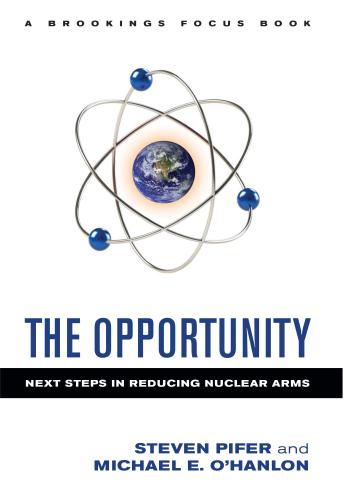

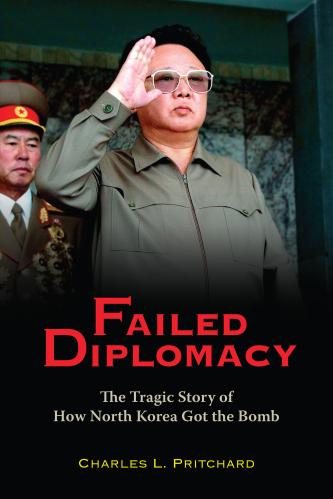
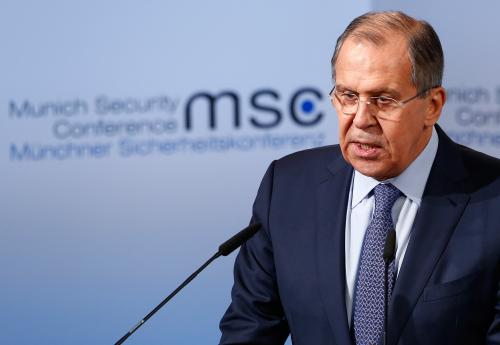
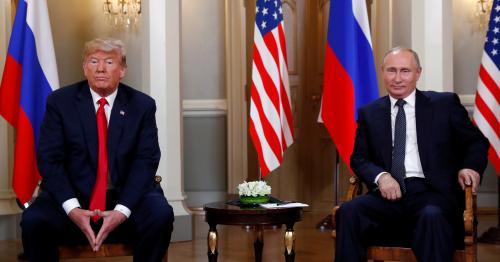


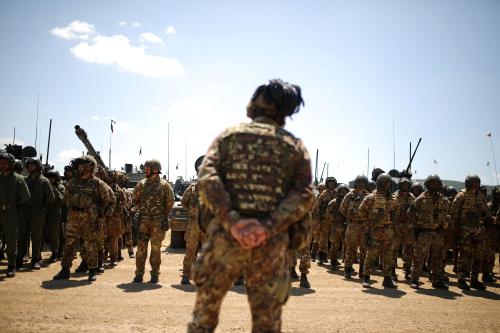
Commentary
Deterrence, modernization, and alliance cohesion: The case for extending New START with Russia
January 16, 2020